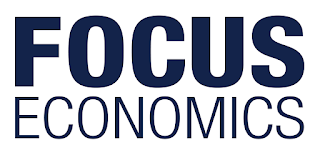The economy continues to gather strength heading into the new calendar year, although it remains fragile, as evidenced by December’s PMI which sank back into pessimistic territory. Other indicators are more positive: In the July–September period growth strengthened, and the unemployment rate declined to a multi-year low. In addition, international reserves were significantly bolstered in 2017 thanks to renewed investor confidence, while the trade deficit narrowed sharply. On 20 December, the IMF’s Executive Board completed the second review under the Extended Fund Facility, unlocking USD 2 billion of additional funding. This will be complemented by USD 1.2 billion recently committed by the World Bank to help support the economy and boost job creation. While praising reform progress, the IMF urged authorities to continue paring back energy subsidies and take steps to increase tax revenues. The fiscal and external positions should be strengthened by the giant Zohr gas field that came onstream in December, moving Egypt closer to energy self-sufficiency. Growth should remain solid going forward. New investment and industrial licensing laws are likely to boost investment, while the external sector will benefit from the weaker pound. However, the elevated debt burden could become a pressing concern if reform momentum slows, and security worries continue to cloud the outlook. FocusEconomics analysts expect GDP to expand 4.4% in FY 2018, up 0.1 percentage points from last month’s forecast, and 4.8% in FY 2019. Headline inflation dropped from 30.8% in October to 26.0% in November, on the back of a favorable base effect. At its 28 December meeting, the Central Bank kept the Overnight Deposit Rate unchanged at 18.75%. Our panelists expect inflation to decline going forward, averaging 16.2% in calendar year 2018 and 12.2% in calendar year 2019.
The Emirates NBD Egypt Purchasing Managers’ Index (PMI) fell from 50.7 in November to 48.3 in December, signaling a worsening in operating conditions after briefly moving into positive territory for the first time in over two years in the prior month. December’s decrease was driven by contractions in output and new orders both at home and abroad. On the positive side, despite subdued activity, the rate of job shedding reached a 28-month low, likely thanks to strong business confidence regarding future growth prospects. Firms’ sentiment was underpinned by increased capital expenditure and expected future economic stability. On the price side, input price inflation eased to a near two-year low, while the rate of output price inflation also dipped.




